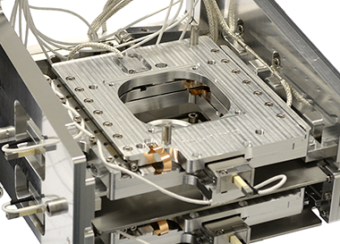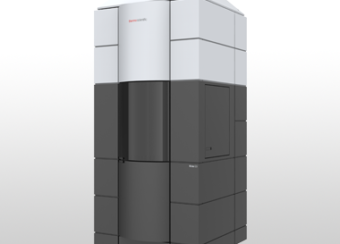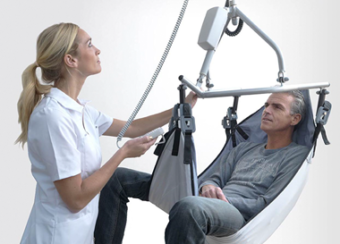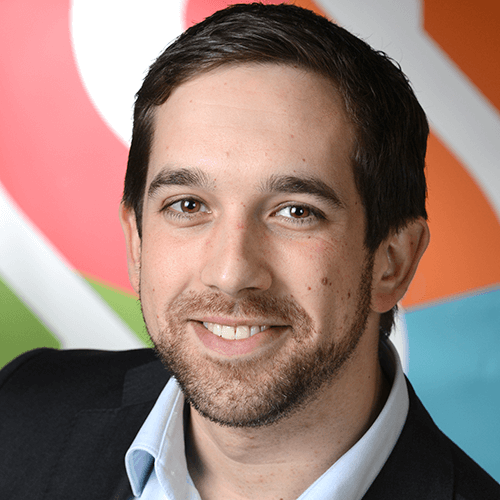Microsure’s robotic arms rotate accurately due to sensor expertise

In 2025, Microsure will begin clinical trials of its microsurgery robot. The encoder systems that provide the high-precision movements were designed by the Eindhoven-based company in consultation with sensor specialist Sentech, which collaborated with Microsure as a development partner along with system builder MTA.
This article was written by Alexander Pil and appeared in Link Magazine
Sentech became involved from an early stage in the development of the Musa-3, Microsure’s third-generation microsurgery robot. Since Sentech also collaborates on a regular basis with MTA, which is involved in the project as a system developer and manufacturing partner, the triad was quickly formed. ‘It was quite a challenge in the first phase because although the direction was clear, how do you then translate that into actual specifications?
The numbers were sometimes more about a gut feeling than exact science,’ recalls Sean Ram, Account Manager at Sentech. ‘There was some friction at times, in a positive sense, through challenging each other and continuing to ask questions. We could have open discussions.’
As a sensor specialist, Sentech came on board to advise Microsure and MTA on all the possible sensor technologies. ‘What advantages and disadvantages come with each choice? How big or how small is it? And what specs can you achieve with it?’ sums up Ram. This information proved most useful in translating the specs. ‘It’s very easy to say: I want an accuracy of 0.01 degrees. But what does that mean in practice, at the system level and at the sensor level? Because if a sensor is installed a tenth of a millimeter out – which is very human – the error is already ten times too big. How do you deal with that? We had interesting discussions where we questioned each other in depth.’
Saying no
Pieter van Wegberg, Project Manager at MTA, on working with Sentech: ‘You have a lot of companies that, to put it crudely, just shuffle boxes around. But Sentech is very good at joining in and thinking collaboratively with us.’ To properly control the rotational movements in the robot arm, an encoder was needed that could do that bit more within a limited installation space. ‘We ended up with a standard component that we all managed to get the most out of.’
Ram adds, ‘Alternative components were also possible, but they came at an exorbitant cost. Then you have to ask yourself if it’s worth it.’ That kind of consideration is why Van Wegberg values Sentech: ‘They are very good at finding a solution that fits the business case. And they also dare to say ‘no’ when something simply isn’t possible. Not everyone does that. In that respect, Sentech is not a supplier but a development partner.’
Separate circuit board
The absolute encoder chosen is basically nothing more than a small chip. One option was to integrate it directly into the PCB that contains all the electronics for this kind of articulation. ‘But what if that encoder goes wrong? Then you have to replace the entire module,’ states Jurre van Son, Account Manager at Sentech. ‘Using our knowledge and expertise in sensor technology and integration, Microsure was able to come up with a design where the encoder chip is located on a separate circuit board.’
Sentech is responsible for manufacturing that sensor PCB. It has also set up the supply chain for this purpose. ‘There are quite a few critical process steps involved in properly handling those encoder chips,’ according to Van Son. ‘That’s why we prefer to do that in-house, so we can take responsibility if anything goes wrong.’ The same goes for the ruler with the stripe pattern that the sensor uses to determine its position. Together with Sentech, MTA designed and produced a hub for this purpose which Sentech then very accurately glues the ruler onto. Van Son: ‘We check whether the design has been carried out correctly and manage the supply chain.’
Flexible and rigid at the same time
Asked about the biggest challenge, Ram names the flexibility needed during prototype development combined with a process that needs to be tightly controlled. ‘After all, this is a medical application, so your methods have to comply with ISO 13485 standards. That requires very stringent processes where everything is properly safeguarded. At the same time, you are in the middle of a development process where, of course, this and that keeps on changing. You need to keep your wits about you here, so you can continue to meet the standards but still be flexible.’
Sentech regularly works on medical systems, but these are mostly patient-support systems or equipment for laboratory environments. So this project was a new application. Van Son: ‘For our customers in the automotive industry, we integrated the very strict IATF standard into our organization. A lot of precise safeguards need to be put in place there as well. In this process with Microsure, we had to record and document things in a different way, but the underlying structure and how you deal with tightly arranged processes and supply chains was nothing new to us.’
Ram concludes enthusiastically: ‘It’s incredible that we can be involved in this kind of development in the Netherlands. Someone invents something and within a 60-kilometer radius there is a complete chain that can answer the question in open collaboration: how do we make it happen?
This is how you integrate successful sensor technology!
Integrating successful sensor technology is not without its challenges. How do you prepare yourself for environmental factors that you’re not yet aware of? And which sensor trends can you, as an engineer, expect to see in the future?
You’ll find the answers to these questions in our free e-book, including practical examples of many common sensor issues and solutions.
Get some inspiration, and download this free e-book now.
This article was written by Alexander Pil and appeared in Link Magazine (No. 2, April 2024)






